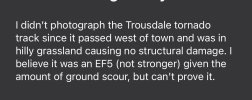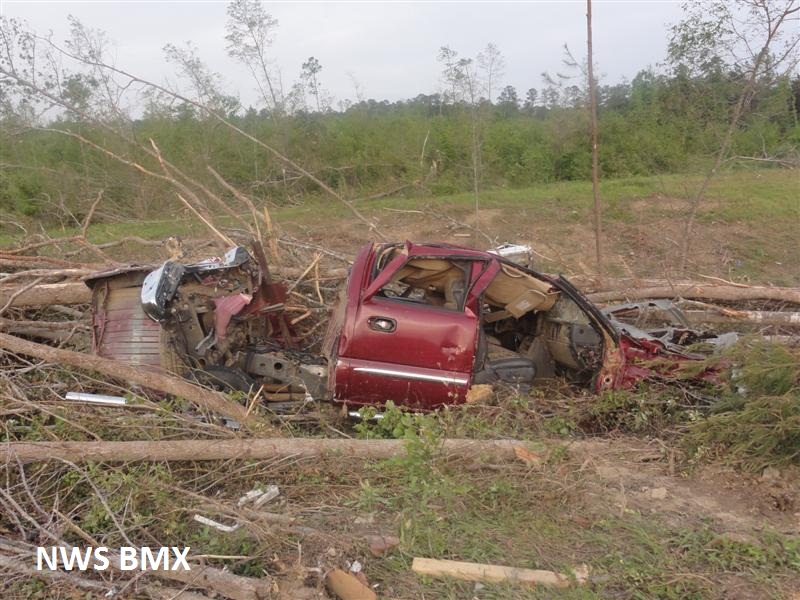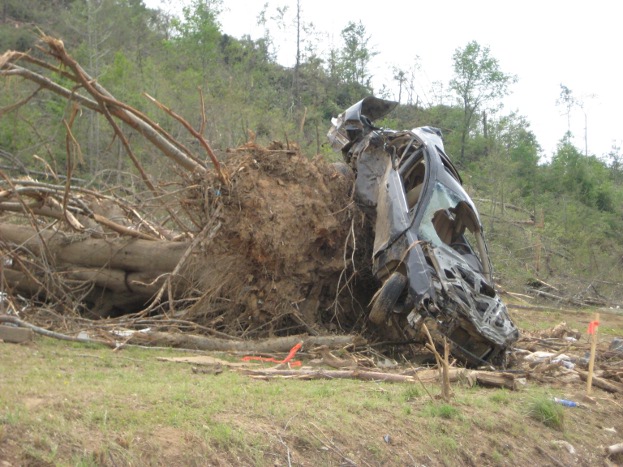joshoctober16
Member
for one of the big 3 EF3 it states this.Apologies for just now seeing this, but here are some. I think it’s safe to say this one was probably a bit stronger than an EF3.
View attachment 47412View attachment 47413View attachment 47414View attachment 47415
View attachment 47422
Here’s the property of the ‘well-built’ home that was swept clean.
View attachment 47416View attachment 47417
Now for what’s relevant in this discussion, the interesting things I found in the damage points file I received from NWS DDC. While going through the file and plotting out the given coordinates, I noticed these DI’s from Hopewell.
The first 3 photos I attached were from a farmstead that was completely destroyed and had a fatality. It was labeled as an EF4 DI in the file. The home that was described as well-built and being swept away was also labeled as “EF04,” which could be a typo, but interesting nonetheless.
View attachment 47420
View attachment 47421
There are a few possibilities that could explain what happened here. Either this was all just a straight up typo and an error, or it was supposed to be upgraded and for whatever reason never got finalized as such. The third possibility, and what I think is the most logical, is that the tornado was initially rated an EF4 then was later downgraded to EF3. Although contextual evidence was crystal-clear indicative of a violent tornado, construction practices weren’t great for the residences impacted.
It is also worth noting that the initial surveys from the first QRT for Greensburg used some rather strict criteria for the residential damage DI’s. They initially said that virtually all the damage within Greensburg was caused by an EF3 to low-end EF4 tornado, and that a section of the High School was what pushed them to rate it an EF5. If they were using those same guidelines for the tornadoes that followed Greensburg, then it’s no wonder none of them were rated higher than EF3, despite both Trousdale and Hopewell cleanly sweeping away farm homes.
Anyway, I emailed NWS Dodge City to see if I could get an explanation about the DI labeled EF4, but never received a response unfortunately. I do plan on emailing the retired DDC Met who surveyed the entire event, and I’ll update if I receive a response.
This tornado moved out of northwest Pratt county and dissipated just south of Macksville. It did strong EF3 damage to farms, trees, machinery and vehicles. A Blazer was carried over 3/4 of a mile and was barely recognizable as a vehicle. Several dozen head of cattle were killed along with wildlife in the area. One well built home was completely swept off it's foundation.
A vehicle is thrown 0.75 miles away.
3/4 of a mile or 0.75 miles of a mile = 1.207 km.
and it swept clean a well built home ... yet only EF3??? EF3 are for poorly built homes only.
im pretty sure this is the second EF3 wedge.





